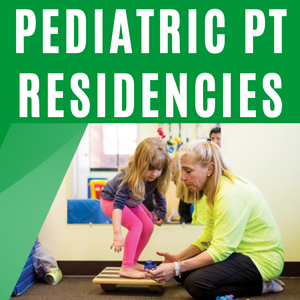Back
Serial Casting and Orthotic Management for Toe Walking in a Child on the Autism Spectrum: A Case Report
- AW
Amanda Wirth, PT, DPT, PCS
Senior Physical Therapist
NYU Langone Orthopedic Hospital
Brooklyn, New York, United States
Background & Purpose: This case study report will discuss the implementation of serial casting in conjunction with orthotic management to improve gait kinematics for a child with a diagnosis of autism spectrum disorder (ASD) and idiopathic toe walking (ITW). Literature review revealed serial casting and orthotic usage as a potential treatment strategy to improve gait kinematics for patients with ASD and ITW.
Case Description: The patient is a four-year-old boy with a medical history of ASD and ITW. The family was referred for a physical therapy (PT) evaluation with primary complaints of ankle stiffness and toe walking. Family was referred for a PT evaluation by their orthopedic surgeon with primary complaints of ankle stiffness and toe walking. The patient had never received PT services prior. Research by Barkocy et al shows improvements in ankle kinematics and functional ankle dorsiflexion (DF) in children with a history of ASD and ITW.
Outcomes: The following outcome measures were administered prior to initiation of serial casting: ankle DF range of motion (ROM) knee extended and flexed, hamstring length test, observational gait scale and 50 foot toe walking test. Patient received 7 applications of bilateral serial casts utilizing soft cast with fiberglass reinforcement roughly one time per week over a 10 week period. Missed PT sessions were due to coverage difficulties and a transportation issue. Following serial casting, he was immediately placed into bilateral posterior leaf spring orthotics for carryover. Improvement in ankle DF knee extended ROM by 32 degrees on the right ankle (increasing to +6 degrees) and 26 degrees on the left ankle (increasing to +2 degrees). Pre-casting, he ambulated on tip-toes 100% of the time as per the 50 foot toe walking test. Post serial casting, he ambulates with 100% flat-foot and/or initial contact with use of his orthotics as per the 50 foot toe walking test. Heel rise improved from fixed equinus to slightly early and improved base of support from narrow to neutral as per the observational gait scale.
Discussion: In conclusion, the child demonstrated improvement in bilateral ankle DF ROM knee extended and knee flexed, improvement in 50 foot toe walking test, and improvement in observational gait scale following a 10 week program of serial casting and orthotic management. The patient will continue with outpatient physical therapy receiving conservative treatment with emphasis on strengthening his proximal musculature, continue to improve range of motion, and develop a home exercise program for home carryover. Family has been instructed to utilize his orthotics daily with the plan to follow up in 6 months or sooner as needed. The combination of serial casting and orthotic management may be appropriate to consider when working with a child with ASD and ITW.
Case Description: The patient is a four-year-old boy with a medical history of ASD and ITW. The family was referred for a physical therapy (PT) evaluation with primary complaints of ankle stiffness and toe walking. Family was referred for a PT evaluation by their orthopedic surgeon with primary complaints of ankle stiffness and toe walking. The patient had never received PT services prior. Research by Barkocy et al shows improvements in ankle kinematics and functional ankle dorsiflexion (DF) in children with a history of ASD and ITW.
Outcomes: The following outcome measures were administered prior to initiation of serial casting: ankle DF range of motion (ROM) knee extended and flexed, hamstring length test, observational gait scale and 50 foot toe walking test. Patient received 7 applications of bilateral serial casts utilizing soft cast with fiberglass reinforcement roughly one time per week over a 10 week period. Missed PT sessions were due to coverage difficulties and a transportation issue. Following serial casting, he was immediately placed into bilateral posterior leaf spring orthotics for carryover. Improvement in ankle DF knee extended ROM by 32 degrees on the right ankle (increasing to +6 degrees) and 26 degrees on the left ankle (increasing to +2 degrees). Pre-casting, he ambulated on tip-toes 100% of the time as per the 50 foot toe walking test. Post serial casting, he ambulates with 100% flat-foot and/or initial contact with use of his orthotics as per the 50 foot toe walking test. Heel rise improved from fixed equinus to slightly early and improved base of support from narrow to neutral as per the observational gait scale.
Discussion: In conclusion, the child demonstrated improvement in bilateral ankle DF ROM knee extended and knee flexed, improvement in 50 foot toe walking test, and improvement in observational gait scale following a 10 week program of serial casting and orthotic management. The patient will continue with outpatient physical therapy receiving conservative treatment with emphasis on strengthening his proximal musculature, continue to improve range of motion, and develop a home exercise program for home carryover. Family has been instructed to utilize his orthotics daily with the plan to follow up in 6 months or sooner as needed. The combination of serial casting and orthotic management may be appropriate to consider when working with a child with ASD and ITW.

.png)
.png)
.png)
.jpg)
.png)
.png)
